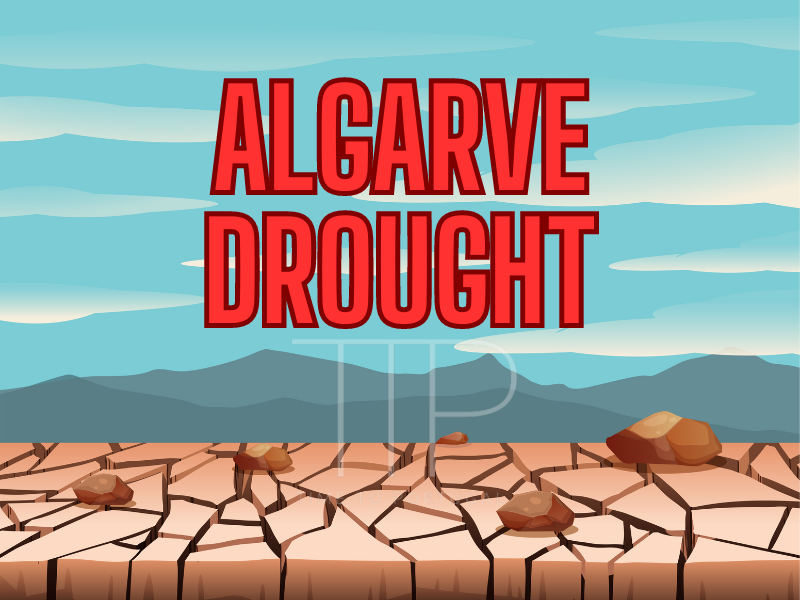According to the Minister for the Environment and Climate Action, Duarte Cordeiro, these are the measures needed at the moment to ensure that we reach the end of 2024 with enough water for public supply.
The government decided on Wednesday to impose a 15% cut in urban water consumption in the Algarve, compared to last year’s levels, which includes the tourism sector and families, and also a 25% reduction in the volumes of water used for agriculture. However, in the eastern Algarve, and in relation to the Odeleite dam, this cut for farmers will be double, in the order of 50%, while in the Funcho-Arade dam it will be 40%. As for water abstraction for irrigation, the cuts will be around 15%.
According to the Minister for the Environment and Climate Action, Duarte Cordeiro, these are the measures needed at the moment to ensure that we reach the end of 2024 with enough water for public supply.
“It’s important that everyone pulls together to meet these targets and to manage the meager resources we have for the coming years,” he said when presenting the measures.
The 18th meeting of the Permanent Commission for the Prevention, Monitoring and Follow-up of the Effects of Drought took place this Thursday in Faro, at the headquarters of the Algarve Regional Coordination and Development Commission, and was chaired by the Minister for the Environment and Climate Action, Duarte Cordeiro, and the Minister for Agriculture and Food, Maria do Céu Antunes.
After many hours of meetings and more intense work over the last two weeks, a new contingency plan was finally drawn up to limit water consumption in the Algarve, a region of the country experiencing its longest drought on record.
At the press conference following the meeting, Duarte Cordeiro said that Portugal currently has 73% of the capacity of the country’s reservoirs, and that 38% of the territory is in a meteorological drought, which is mainly concentrated in the south of the country.
However, the capacity of the dams in the Algarve is currently only 25%, compared to 45% at the same time last year. “The Algarve’s reservoirs are at their lowest level ever. If nothing were done about moderation on the consumption side, we would reach the end of 2024 without water for public supply,” said the minister.
In 2023, urban water consumption in the Algarve was 74 cubic hectometers of water, when it should have been only 64 cubic hectometers, which led the government to dictate cuts of 15% and to double the capacity of aquifers, from 7 to 14 cubic hectometers.
As for agriculture, the region consumed 135 cubic hectometers of water last year: 100 cubic hectometers from aquifers and 35 cubic hectometers from reservoirs, and the water available in the reservoirs should be reserved mainly for urban consumption, the minister stressed. Given these figures, the government decided to cut the water available to Algarve farmers by 25%, less than the more significant cuts that had been anticipated. However, in order to preserve the water from the dams, in this case the reduction for farmers will be between 40 and 50%.
He also announced the creation of a working group, which in turn will have five technical groups to monitor the measures for each sector.
As for the Algarve’s farmers and producers, they have already contested the proposals put forward by the government, fearing that they will be left without production for the next two years. They consider the planned water cuts to be “unaffordable”, “unbalanced” and “unfair” and are therefore demanding more state support.
The Minister for the Environment, Duarte Cordeiro, has already acknowledged that the situation is serious and said that the government is even considering solutions that include reducing the water pressure in the Algarve’s taps, suspending second meters and even penalties for those who consume more water.
In the case of the agricultural sector, Duarte Cordeiro had already said that it was necessary to ensure the survival of agriculture by reducing the water available in the Odeleite reservoir by 70% and the Funcho-Arade reservoir by 50%, which has not happened yet.
The opening of a tender for the construction of a desalination plant for the Albufeira area, with a capacity of 16 million cubic meters, is expected later this month.
For her part, the Minister of Agriculture, Maria do Céu Antunes, has already admitted that, in order to minimize the drought situation, boreholes could be rehabilitated and “small mobile desalination plants” could be used in Algarve agriculture.


[…] Related article: Algarve drought: Government to cut water for agriculture by up to 50% and… […]
[…] Related article: Algarve drought: Government to cut water for agriculture by up to 50% and […]